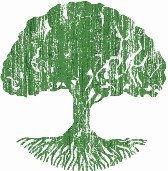 To shape AASLH’s future, the Council and its Aspirations Task Force have outlined four key ideas. We are interested in knowing what you think. You can share your comments using the “Leave a Reply” box below or by emailing AASLH President & CEO John Dichtl or me.
To shape AASLH’s future, the Council and its Aspirations Task Force have outlined four key ideas. We are interested in knowing what you think. You can share your comments using the “Leave a Reply” box below or by emailing AASLH President & CEO John Dichtl or me.
Over the summer, the AASLH Council organized the Aspirations Task Force, which includes representatives from Council, staff, the Leadership Nominating Committee, and the membership at large, to guide a strategic thinking process that is nimble, responsive, and open. The task force is working across committees and within Council, and is reaching out to the standing committees and to the membership at large for input.
I encourage you to share your ideas and comments today.
Katherine Kane
AASLH Aspirations Task Force Chair and Council Vice Chair
Executive Director
Harriet Beecher Stowe Center
Strategic Thinking about AASLH’s Future
The Aspirations Task Force leads AASLH’s strategic thinking process so that the Association reaches its goals, and can be nimble, responsive, and accountable. The task force is composed of individuals on Council, including the chair, vice chair and the president, and several members of AASLH at large. After initial brainstorming and analysis at the June 2015 Council meeting with the help of consultant Laura Roberts, the task force began drafting an aspirational philosophy statement as a touchstone for conversations with membership and in Council about the AASLH’s future. During the 2015 Annual Meeting in Louisville, the task force presented the version below and now seeks comments from AASLH members and others in the history community.
To achieve programmatic and service success and effectively lead the field, AASLH aspires to the following:
AASLH promotes the relevance of history:
- Insists on history rather than heritage, on the provocative rather than the palliative
- Identifies history as the essential shaper of the present and as context for each individual
- Recognizes history as always complex, often contested
- Promotes the methods of history and historical thinking
AASLH acts to build diversity and inclusiveness:
- Finds the creativity, the resources and the will to change (internally) and advances diversity and inclusiveness in the history field
- Recognizes and defines the inequities in the history/cultural profession and addresses them by dedicating intellectual, financial, emotional and structural resources for building a diverse and inclusive field
- Seeks to develop the capacity of member organizations and for itself to build relationships based on mutual trust, balance of power, and recognition of expertise within diverse communities to democratize the historical narrative and sustain the relevance of history organizations to a rapidly changing demographic
- Collaborates with organizations that have successfully developed inclusive policies and programming
- Encourages telling the stories that have not been told
AASLH cultivates an experimental and creative spirit within AASLH and among constituents and partners.
- Leads, models, and is a source for imaginative problem solving, openness, and resourcefulness, while also looking to other fields for inspiration
- Supports a culture of creativity and informed risk-taking in its programs and publications
- Encourages constituents and partners to create laboratories for new methods of attracting and engaging audiences, members, and funders, understanding that failure is an inherent part of experimentation
- Cultivates and supports knowledge-sharing among constituents and partners, encouraging honest reporting and analysis of programmatic and managerial experiments, so that we can all learn from each other’s creative efforts, successes, and disappointments
- Models an adaptive and nimble, yet reflective, culture to address change and quickly take advantage of opportunities
AASLH increases its financial stability and builds trust
- States financial goals publicly, encourages questions, and meets those goals in a timely and organized fashion
- Acts transparently and consistently, focusing on outcome and process; by being transparent and consistent, membership and the larger community will see our motives and learn to rely on us
- Will be a role model for other non-profits in financial decisions, processes, and reporting


